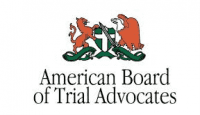What are the most Common Injuries Resulting from Head-on Collisions?

Head-on collisions are frightening. Two cars coming at each other – often at high speeds – cando quite a bit of damage to each other, and to the drivers and passengers inside. Those unfortunate enough to end up in these collisions often come away with severe or life-threatening injuries, even if their airbags deploy properly. It is no wonder that so many victims of head-on collisions decide to fight back and hold the driver responsible for the crash financially accountable through a personal injury lawsuit.
If you have been injured in a head-on collision, it is essential that you seek medical attention as soon as possible. Some injuries can be hard to see and diagnose without proper medical training. Seeing a doctor will not only help you recover from your injuries but will also give you the documentation you will need if you later for the claims process.
If you do decide to take legal action, the Houston car accident lawyers of Fleming Law are here to help. With that in mind, here are some of the common types of injuries that result from head-on collisions.
Traumatic Brain Injuries
One of the most tragic types of injuries that result from a head-on collision is an invisible one. A traumatic brain injury (TBI) occurs when the brain is hit, either because of a direct blow to the head or because it strikes the inside of the skull when the head is jostled. This type of injury is especially prevalent in head-on collisions. This is because the brain and head will move forward while the seat belt holds back the rest of the body, which can cause the brain to hit the inside of the skull and become injured.
TBIs can range from mild (also called a concussion) to moderate to severe, and can vary in symptoms from headaches and dizziness to amnesia or even comas. If you are even slightly dizzy or disoriented after a head-on collision, your doctor will likely test for a TBI, either with a simple vision and reflex test or with a brain scan, depending on what kinds of symptoms you are experiencing.
Neck and Back Injuries
Neck and back injuries are very common in head-on collisions. The neck, in particular, is especially vulnerable since the seat belt does not restrain it. Any injury to the neck and back also has the potential to damage the spinal cord, which runs through the spine and carries nerve signals between the brain and the rest of the body. If you suffer a spinal cord injury, you may experience total or partial paralysis and need physical therapy.
Chest Injuries
 Your chest is likely to receive much of the impact in a head-on collision. A successfully deployed airbag will lessen the blow somewhat, but even with that extra cushion, you could still receive serious bruising or even broken ribs. The latter is especially dangerous, as a broken rib could puncture any nearby organs, which could be deadly. Even if your ribs and organs remain intact, a significant blow to the chest could still leave you with painful breathing for a long time after the accident.
Your chest is likely to receive much of the impact in a head-on collision. A successfully deployed airbag will lessen the blow somewhat, but even with that extra cushion, you could still receive serious bruising or even broken ribs. The latter is especially dangerous, as a broken rib could puncture any nearby organs, which could be deadly. Even if your ribs and organs remain intact, a significant blow to the chest could still leave you with painful breathing for a long time after the accident.
Internal Organ Damage
A head-on collision can put many vital organs at serious risk. One of the most vulnerable organs is your lungs, which could be punctured by a broken rib. The same thing could potentially happen to your heart or other organs housed by the ribcage. Other vulnerable organs people often do not think about include the digestive tract, much of which is housed in the lower abdominal area. The intestines, for instance, could be damaged when the lower portion of the seat belt contracts to keep you in place. The kidneys, spleen, liver and other important organs are also vulnerable in a head-on collision. Organ damage is often difficult to immediately detect. If your doctor suspects it at all, they will likely put you under extensive testing to make sure that everything is all right on the inside.
Broken Bones
Head-on collisions often result in broken bones, due to the sheer force of impact of the crash. Your arms and legs, for instance, are at risk of hitting the steering wheel or dash with significant force since the seat belt does not restrain them. Many head-on collision victims come away with broken limbs, though it is certainly possible to break other bones as well, especially the pelvis.
Cuts, Bruises, and Abrasions
While they are often not the most serious injury a person comes away with, cuts, bruises, and abrasions can be some of the most visible and immediately painful injuries resulting from head-on collisions. These injuries are common in places where your body makes contact with a part of the car. For example, bruises are common around the chest area and anywhere else that your body hits the airbag, steering wheel, or dash. Cuts and abrasions are frequent around the areas where the seat belt is secured, such as the shoulder and pelvic area. Even if you do not need stitches, it is still a good idea to at least apply an over-the-counter antibiotic and bandages to any open wounds to prevent infection and to show them to your doctor in case you need additional medical attention for them.
Contact a Car Accident Lawyer in Houston Today
 Recovering from any head-on collision is tough. In addition to the pain of your injuries and sky-high medical bills, it can be difficult to find the peace of mind you need to move on with your life and get back behind the wheel.
Recovering from any head-on collision is tough. In addition to the pain of your injuries and sky-high medical bills, it can be difficult to find the peace of mind you need to move on with your life and get back behind the wheel.
With the legal services of Fleming Law you can be confident that your injury case is in good hands.
If you or someone you love has been injured in a head-on collision, contact the Houston auto accident lawyers of Fleming Law today for a free consultation.

Brendan received his JD from South Texas College of Law and his MBA from Baylor University. He then began his legal career as in-house counsel for a publicly-traded company, advising on matters such as mergers and acquisitions, securities, compliance, and general corporate transactions. He then worked at a national law firm in which he represented commercial banks, private equity firms, and business owners in complex transactions before joining Fleming Law, Brendan uses his considerable knowledge of business-related matters by working on cases involving business law, real estate law, and contracts. Connect with me on LinkedIn








